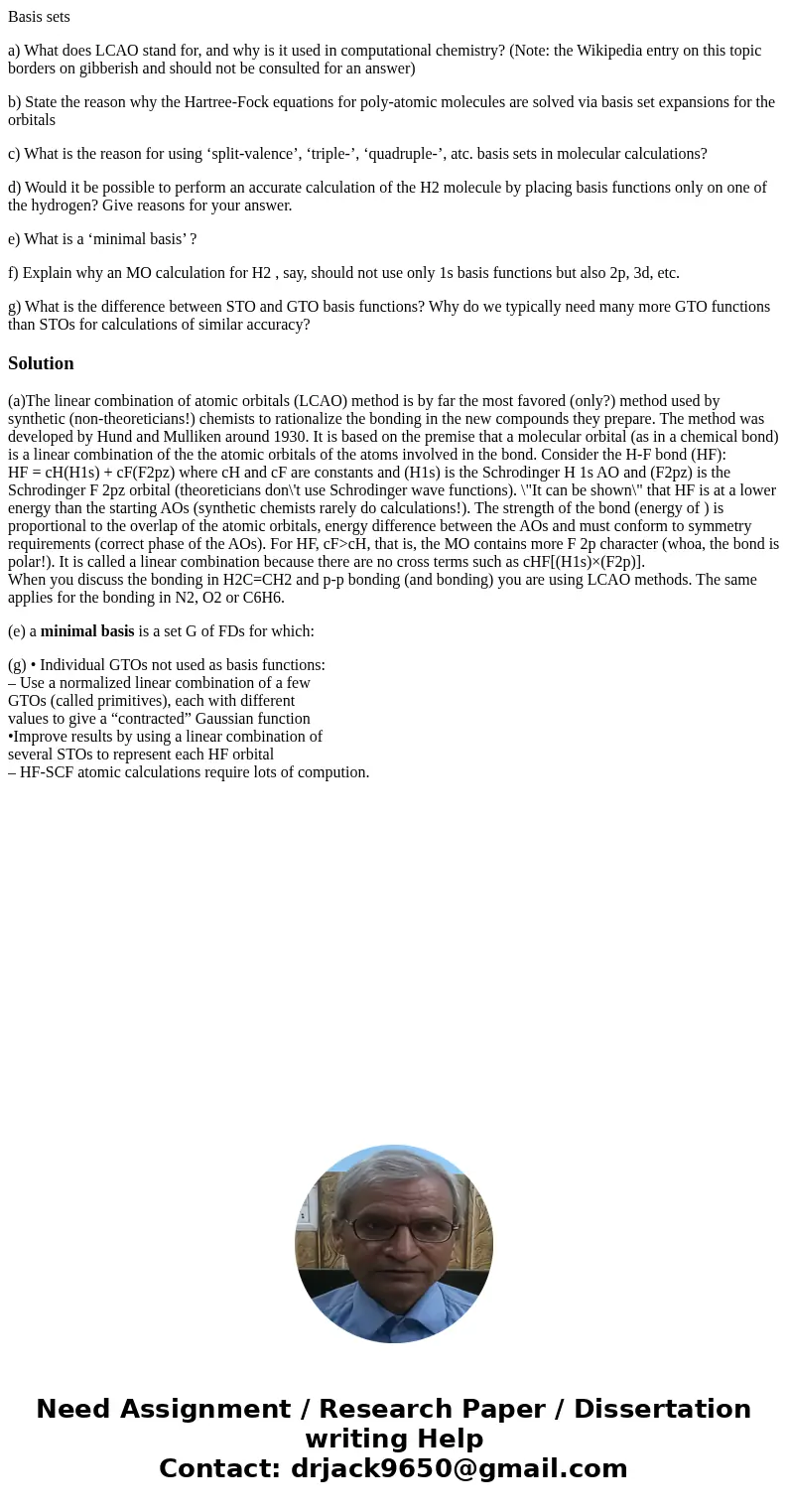Basis sets a What does LCAO stand for and why is it used in
Basis sets
a) What does LCAO stand for, and why is it used in computational chemistry? (Note: the Wikipedia entry on this topic borders on gibberish and should not be consulted for an answer)
b) State the reason why the Hartree-Fock equations for poly-atomic molecules are solved via basis set expansions for the orbitals
c) What is the reason for using ‘split-valence’, ‘triple-’, ‘quadruple-’, atc. basis sets in molecular calculations?
d) Would it be possible to perform an accurate calculation of the H2 molecule by placing basis functions only on one of the hydrogen? Give reasons for your answer.
e) What is a ‘minimal basis’ ?
f) Explain why an MO calculation for H2 , say, should not use only 1s basis functions but also 2p, 3d, etc.
g) What is the difference between STO and GTO basis functions? Why do we typically need many more GTO functions than STOs for calculations of similar accuracy?
Solution
(a)The linear combination of atomic orbitals (LCAO) method is by far the most favored (only?) method used by synthetic (non-theoreticians!) chemists to rationalize the bonding in the new compounds they prepare. The method was developed by Hund and Mulliken around 1930. It is based on the premise that a molecular orbital (as in a chemical bond) is a linear combination of the the atomic orbitals of the atoms involved in the bond. Consider the H-F bond (HF):
HF = cH(H1s) + cF(F2pz) where cH and cF are constants and (H1s) is the Schrodinger H 1s AO and (F2pz) is the Schrodinger F 2pz orbital (theoreticians don\'t use Schrodinger wave functions). \"It can be shown\" that HF is at a lower energy than the starting AOs (synthetic chemists rarely do calculations!). The strength of the bond (energy of ) is proportional to the overlap of the atomic orbitals, energy difference between the AOs and must conform to symmetry requirements (correct phase of the AOs). For HF, cF>cH, that is, the MO contains more F 2p character (whoa, the bond is polar!). It is called a linear combination because there are no cross terms such as cHF[(H1s)×(F2p)].
When you discuss the bonding in H2C=CH2 and p-p bonding (and bonding) you are using LCAO methods. The same applies for the bonding in N2, O2 or C6H6.
(e) a minimal basis is a set G of FDs for which:
(g) • Individual GTOs not used as basis functions:
– Use a normalized linear combination of a few
GTOs (called primitives), each with different
values to give a “contracted” Gaussian function
•Improve results by using a linear combination of
several STOs to represent each HF orbital
– HF-SCF atomic calculations require lots of compution.

 Homework Sourse
Homework Sourse